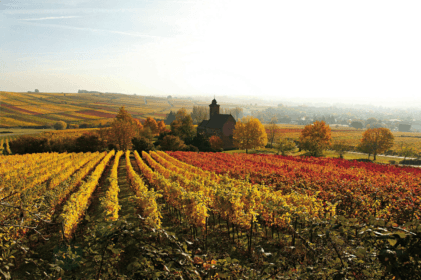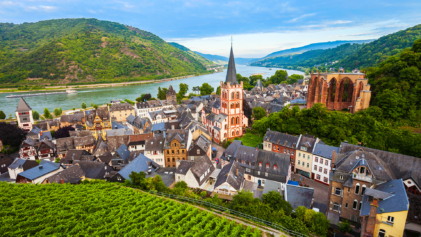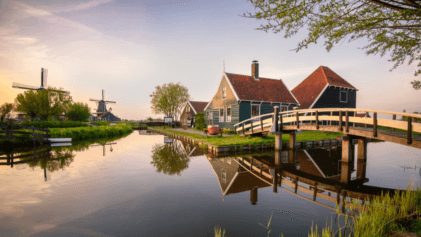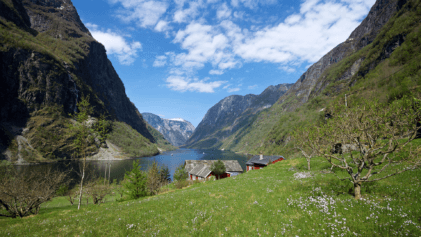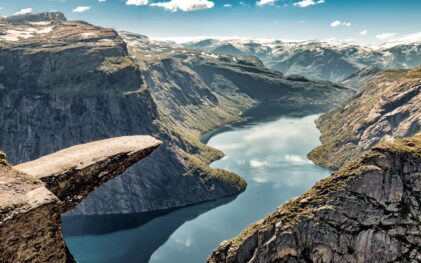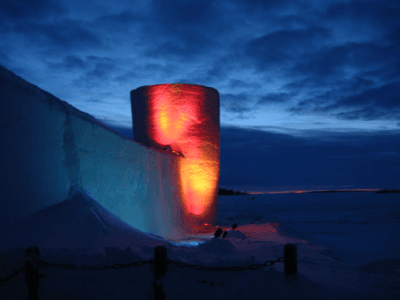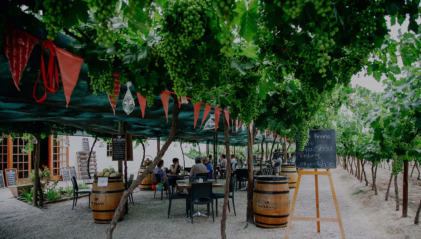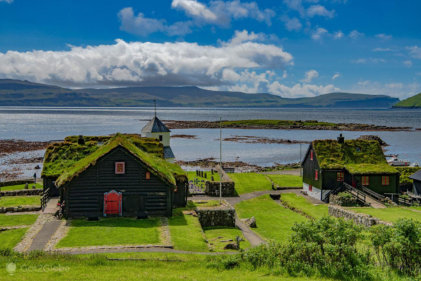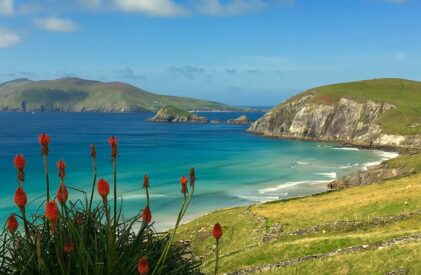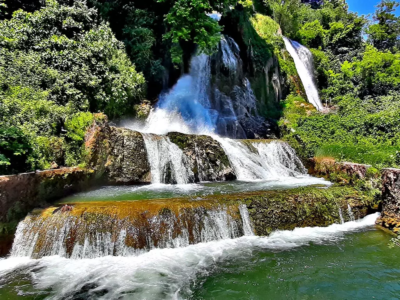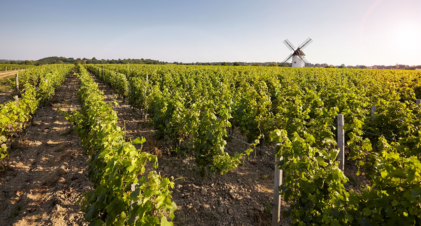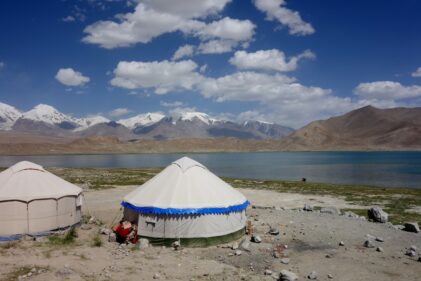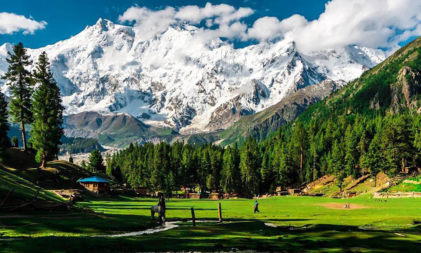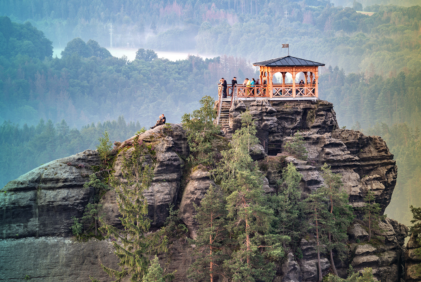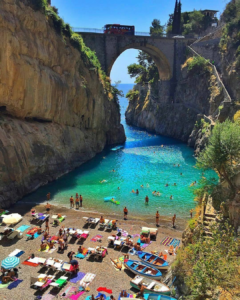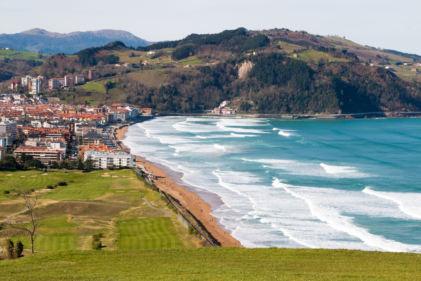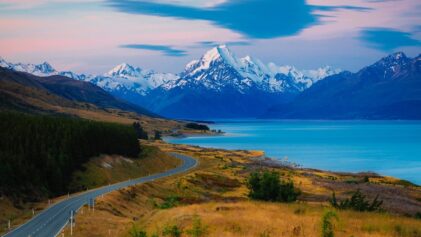North America is a vast continent that offers a wealth of experiences for travellers of all kinds. From the rugged landscapes of the Canadian Rockies to the sun-drenched beaches of Mexico, there is something for everyone to enjoy. If you’re looking for a destination that has it all, here are 10 reasons why North America should be at the top of your travel bucket list.
Natural Beauty
North America is home to some of the world’s most stunning natural landscapes, from the Grand Canyon to Niagara Falls. Whether you prefer hiking, kayaking, or simply taking in the scenery, there are endless opportunities to explore the great outdoors.
Wildlife
North America is home to an incredible variety of wildlife, from bears and moose to bald eagles and whales. Wildlife lovers will find plenty to see and do in national parks like Yellowstone and Banff.
Culture
North America has a rich and diverse cultural heritage, from the First Nations peoples of Canada to the vibrant Latino culture of Mexico. Whether you’re interested in art, music, or history, there is something for everyone to discover.
Food
North America is known for its delicious cuisine, from hearty American barbecue to fresh seafood in Canada’s Atlantic provinces. Foodies will love exploring the local markets and sampling the regional specialties.
Wine
North America is also home to some of the world’s best wineries, particularly in California’s Napa Valley and Canada’s Okanagan Valley. Wine lovers can indulge in tastings and tours while taking in the stunning vineyard scenery.
Adventure
North America offers endless opportunities for adventure, from skiing in the Rockies to surfing in Hawaii. Thrill-seekers will love trying their hand at everything from zip-lining to whitewater rafting.
Festivals
North America is home to some of the world’s biggest and most vibrant festivals, from Mardi Gras in New Orleans to the Calgary Stampede. Whether you’re interested in music, food, or culture, there is a festival for everyone.
City Life
North America’s cities are bustling hubs of activity, from the skyscrapers of New York City to the laid-back vibe of San Francisco. Whether you’re interested in shopping, dining, or exploring museums and galleries, there is plenty to do in North America’s urban centres.
Beaches
North America’s beaches are some of the best in the world, from the white sands of Florida to the rugged coastline of Maine. Whether you’re looking for a quiet retreat or a bustling party scene, you’ll find it all along North America’s shores.
Accessibility
North America is easy to get to from anywhere in the world, with major airports in cities like New York, Los Angeles, and Toronto. Whether you’re travelling solo or with a group, North America is a convenient and accessible destination.
Whether you’re looking for natural beauty, cultural experiences, or adventure, North America has something for everyone. So why not add it to your travel bucket list and start planning your next adventure today?
The History of North America
North America is a vast continent with a rich and complex history that spans thousands of years. The continent was home to many different indigenous cultures and civilizations long before the arrival of Europeans in the late 15th century. Here is a brief overview of the history of North America:
Pre-Columbian Era
The pre-Columbian era refers to the time before the arrival of Europeans in North America. The continent was home to a wide range of indigenous cultures, including the Aztecs, Maya, and Inca in Central and South America, and the Iroquois, Sioux, and Cherokee in North America. These cultures had their own languages, religions, and social structures, and many of them developed complex agricultural systems, cities, and trade networks.
European Exploration and Colonisation
The first Europeans to explore North America were Norse seafarers from Scandinavia who established a short-lived settlement in Newfoundland in the 11th century. However, it was not until the late 15th century that Europeans began to establish more permanent settlements in North America. Christopher Columbus, a Genoese explorer sailing under the flag of Spain, made his first voyage to the Americas in 1492, landing on an island in the Caribbean. This marked the beginning of a period of intense exploration and colonisation by European powers, including Spain, France, England, and the Netherlands.
In the early 16th century, Spanish conquistadors began to conquer and colonise Central and South America, establishing settlements and mining for precious metals like gold and silver. The French established colonies in modern-day Canada, while the English established colonies along the east coast of North America, including Virginia, Massachusetts, and Pennsylvania.
The American Revolution and the United States
In the late 18th century, tensions between the American colonies and Great Britain reached a boiling point, leading to the American Revolution. The American colonists, led by figures like George Washington, Thomas Jefferson, and Benjamin Franklin, declared independence from Great Britain in 1776 and established the United States of America.
The United States rapidly expanded in the 19th century, acquiring territories like Louisiana, Florida, and Texas through purchase or war. The country also experienced significant social and political upheaval during this time, including the abolition of slavery and the women’s suffrage movement.
The 20th and 21st Centuries
In the 20th century, the United States emerged as a global superpower, playing a major role in World War I and World War II and engaging in a prolonged Cold War with the Soviet Union. The country also experienced significant social and political changes, including the Civil Rights Movement and the countercultural revolution of the 1960s.
Today, North America is a diverse and complex continent that continues to evolve and change. It is home to a wide range of cultures, languages, and traditions, and its history remains a subject of ongoing study and debate.
The Geography of North America
North America is the third-largest continent in the world and is located in the Northern Hemisphere, bordered by the Arctic Ocean to the north, the Atlantic Ocean to the east, the Pacific Ocean to the west, and South America to the south. The continent covers an area of approximately 24.5 million square kilometres (9.5 million square miles) and is home to over 580 million people.
Geographically, North America is characterised by a diverse range of landforms, including mountains, plains, plateaus, and coastlines. Some of the most significant geographic features of North America include:
- Rocky Mountains: The Rocky Mountains extend over 4,800 kilometres (3,000 miles) from Canada down to New Mexico in the United States. They are the largest mountain range in North America, with many peaks rising over 4,000 metres (13,000 feet).
- Appalachian Mountains: The Appalachian Mountains run parallel to the east coast of the United States and Canada, spanning over 2,400 kilometres (1,500 miles). They are much older than the Rocky Mountains and are known for their rounded peaks and rolling hills.
- Great Plains: The Great Plains cover much of the central and western United States and Canada, stretching over 3,200 kilometres (2,000 miles) from north to south. They are characterised by their flat, grassy terrain and are home to some of the world’s most important agricultural regions.
- Canadian Shield: The Canadian Shield is a large, ancient rock formation that covers much of Canada, extending into the northeastern United States. It is known for its rugged terrain and numerous lakes and rivers.
- Coastal regions: North America has a diverse range of coastal regions, including the rugged cliffs of the Pacific Northwest, the sandy beaches of Florida, and the rocky shores of the Canadian Maritime provinces.
- Rivers and lakes: North America is home to some of the world’s largest rivers, including the Mississippi, Missouri, and Yukon, as well as many large lakes, such as the Great Lakes and Lake Winnipeg.
- Islands: North America is also home to many islands, including the Aleutian Islands in Alaska, the Hawaiian Islands, and the Caribbean Islands.
North America’s geography has played a significant role in its history and development, shaping the cultures and economies of the continent’s diverse regions. Today, it continues to be a region of great natural beauty and ecological significance, attracting millions of visitors from around the world each year.
Canada
Canada is a country located in North America, with a land area of approximately 9.9 million square kilometres (3.8 million square miles). It is the second-largest country in the world by land area, after Russia. Canada is bordered by the United States to the south and northwest, and by the Arctic Ocean to the north.
Canada is known for its diverse landscapes, ranging from the Rocky Mountains in the west to the Canadian Shield in the east, and from the Arctic tundra in the north to the Great Lakes region in the south. The country is home to a variety of natural wonders, including Niagara Falls, the Canadian Rockies, and the Northern Lights.
Canada is also a culturally diverse country, with a population of over 38 million people representing a range of ethnic and linguistic backgrounds. The country is officially bilingual, with both English and French recognized as official languages.
Canada’s economy is driven by a range of industries, including natural resources, manufacturing, and services. The country is a leading producer of natural resources such as timber, oil, and minerals, and is also a major exporter of agricultural products.
Canada is known for its high quality of life, with a strong social welfare system, universal healthcare, and a commitment to multiculturalism and diversity. The country is also a popular destination for international students and immigrants, offering a welcoming and inclusive environment.
Overall, Canada is a unique and diverse country with a rich history and culture, stunning natural beauty, and a strong economy and social welfare system.
The USA
The United States of America (USA) is a country located in North America, bordered by Canada to the north, Mexico to the south, the Atlantic Ocean to the east, and the Pacific Ocean to the west. It is the third-largest country in the world by land area, covering approximately 9.8 million square kilometres (3.8 million square miles).
The USA is known for its diverse landscapes, including the Rocky Mountains, the Grand Canyon, the Great Plains, and the beaches of Florida and California. The country is also home to a number of iconic landmarks, such as the Statue of Liberty, the Golden Gate Bridge, and Mount Rushmore.
The USA is a diverse and multicultural country, with a population of over 332 million people representing a wide range of ethnic and cultural backgrounds. The country is often described as a melting pot, with immigrants from around the world contributing to its unique culture and identity.
The USA is the world’s largest economy, with a highly developed market-based system and a strong service sector. The country is a leader in a number of industries, including technology, finance, and entertainment.
The USA is also home to a vibrant political system, with a federal system of government and a strong tradition of democratic values and institutions. The country has a long history of promoting civil rights and individual freedoms, and is known for its commitment to freedom of speech, religion, and the press.
Overall, the USA is a diverse and dynamic country with a rich history and culture, a strong economy, and a commitment to democracy and individual freedoms. It continues to be a major player on the global stage, shaping politics, culture, and economics around the world.
Mexico
Mexico is a country located in the southern part of North America, bordered by the United States to the north, Belize and Guatemala to the south, and the Pacific Ocean and Gulf of Mexico to the west and east, respectively. With a land area of approximately 1.96 million square kilometres (761,000 square miles), it is the 13th largest country in the world.
Mexico is known for its rich cultural heritage, with ancient civilizations like the Maya, Aztecs, and Olmecs leaving behind impressive architectural and artistic achievements. The country is also home to a number of stunning natural landscapes, including beaches, deserts, mountains, and tropical rainforests.
Mexico is a diverse and multicultural country, with a population of over 130 million people representing a range of ethnic and linguistic backgrounds. Spanish is the official language of Mexico, but many indigenous languages are also spoken throughout the country.
Mexico is the second-largest economy in Latin America, with a strong manufacturing sector and a growing service sector. The country is known for its exports of oil, silver, and agricultural products like avocados and tequila.
Mexico’s political system is a federal presidential representative democratic republic, with a president serving as both head of state and head of government. The country has a strong tradition of democracy and civil rights, but also faces significant challenges related to corruption, poverty, and drug trafficking.
Overall, Mexico is a vibrant and dynamic country with a rich cultural heritage, stunning natural beauty, and a growing economy. It continues to play an important role in the region and on the world stage.
Other countries in North America
In addition to Canada, the United States, and Mexico, there are several other countries located in North America. These include:
Greenland
Greenland is an autonomous territory of Denmark located in the northern part of North America. It is the world’s largest island, and the majority of its population is of Inuit or Danish descent.
Bermuda
Bermuda is a British overseas territory located in the western part of the North Atlantic Ocean, approximately 1,030 kilometres (640 miles) east of North Carolina in the United States. It is known for its pink sand beaches and turquoise waters.
Saint Pierre and Miquelon
Saint Pierre and Miquelon is a self-governing territorial overseas collectivity of France located off the coast of Canada. It consists of several small islands and is known for its unique blend of French and North American culture.
Saint Martin/Sint Maarten
Saint Martin/Sint Maarten is a Caribbean island divided between the French overseas collectivity of Saint Martin and the Dutch constituent country of Sint Maarten. The island is known for its beaches, nightlife, and cultural diversity.
The Bahamas
The Bahamas is a country consisting of over 700 islands and cays located in the western part of the North Atlantic Ocean. It is known for its crystal-clear waters, stunning coral reefs, and vibrant culture.
Costa Rica
Costa Rica is a country located in the southern part of North America, bordered by Nicaragua to the north and Panama to the south. It is known for its tropical rainforests, volcanoes, and biodiversity, and is a popular destination for ecotourism.
El Salvador
El Salvador is a country located in the southern part of North America, bordered by Guatemala and Honduras. It is known for its rich history and culture, as well as its stunning beaches and natural beauty.
North America is a diverse and fascinating continent, with a wide range of countries and cultures to explore. Each country has its own unique history, traditions, and landscapes, making it a great destination for travellers seeking adventure and discovery.
The Culture of North America
North America is a culturally diverse continent, home to a wide range of traditions, customs, and lifestyles. The continent’s culture has been shaped by a variety of factors, including indigenous traditions, colonialism, immigration, and globalisation.
Here are some of the key cultural elements of North America:
Indigenous cultures
North America has a rich history of indigenous cultures and traditions, with many distinct groups and communities across the continent. These cultures have been shaped by their relationship with the land, and often have a strong emphasis on spirituality, community, and connection to nature.
Food
North American cuisine is diverse and reflects the continent’s history and cultural influences. Some traditional dishes include hamburgers and hot dogs in the United States, poutine in Canada, and tacos and tamales in Mexico. North America is also home to a vibrant foodie culture, with many cities boasting a variety of culinary options.
Music
North America has a rich musical heritage, with many genres originating or flourishing on the continent, including jazz, blues, rock, hip-hop, and country. Many famous musicians and bands have also emerged from North America, including Elvis Presley, Michael Jackson, Beyoncé, and Drake.
Sports
Sports are a major part of North American culture, with many professional sports leagues, including baseball, football, basketball, and hockey, attracting millions of fans across the continent. North America has also hosted many major international sporting events, including the Olympics and the FIFA World Cup.
Art and literature
North America has a rich tradition of art and literature, with many famous artists, writers, and poets emerging from the continent. North American art is diverse and reflects a variety of cultural influences, from indigenous art to modern and contemporary art movements. North American literature is also diverse, with many classic works emerging from the continent, including To Kill a Mockingbird, The Great Gatsby, and The Catcher in the Rye.
North American cuisine
North American cuisine is a diverse culinary experience that has been influenced by a range of cultures and traditions. The cuisine of North America is heavily influenced by European, Indigenous, and African cuisines, as well as the fusion of these cuisines with local ingredients and techniques.
Some of the iconic dishes of North America include:
- Hamburgers: A quintessential American dish, the hamburger consists of a beef patty served in a bun with toppings such as cheese, lettuce, tomato, and onion.
- Hot dogs: Another classic American dish, the hot dog is a sausage served in a bun with condiments such as ketchup, mustard, and relish.
- Barbecue: Barbecue is a style of cooking that originated in the southern United States and involves slow-cooking meat over a wood fire. Popular barbecue dishes include ribs, pulled pork, and brisket.
- Macaroni and cheese: A comfort food staple, macaroni and cheese consists of macaroni pasta cooked with a cheese sauce.
- Pizza: Originally an Italian dish, pizza has become a staple of North American cuisine. Pizza toppings can vary widely, but common toppings include tomato sauce, cheese, and a variety of meats and vegetables.
- Fried chicken: Fried chicken is a popular dish in the southern United States and is made by coating chicken in seasoned flour and frying it until crispy.
- Poutine: A Canadian dish, poutine consists of french fries topped with cheese curds and gravy.
- Clam chowder: A New England specialty, clam chowder is a soup made with clams, potatoes, and onions in a creamy broth.
- Tacos: Tacos are a Mexican dish that has become popular in North America. They consist of a tortilla filled with meat, beans, cheese, and vegetables.
- Bagels: Bagels are a Jewish bread that has become a popular breakfast food in North America. They are often served with cream cheese, lox, or other toppings.
North America Weather
North America experiences a wide range of weather conditions, from the freezing temperatures of the far north to the tropical heat of the south. Visitors should be prepared for varying weather conditions depending on their destination and time of year, and should always check local weather forecasts before travelling. Here are some general weather trends across the continent:
- Northern North America: The northern regions of North America, including Canada’s Yukon and Northwest Territories, experience long, cold winters with temperatures often dropping well below freezing. Summers can be short and mild, with temperatures ranging from cool to warm.
- Western North America: The western region of North America, which includes the Pacific Northwest and California, is known for its mild, rainy winters and warm, dry summers. The coastal areas experience cool temperatures and frequent fog, while inland areas can get quite hot in the summer.
- Central North America: The central region of North America, which includes the Great Plains and the Midwest, experiences four distinct seasons. Winters can be cold and snowy, while summers are hot and humid. Spring and fall can be mild and pleasant.
- Eastern North America: The eastern region of North America, which includes the Northeast and Southeast, also experiences four distinct seasons. Winters can be cold and snowy, while summers are hot and humid. The region is also known for its severe weather, including hurricanes, tornadoes, and thunderstorms.
- Southern North America: The southern region of North America, which includes Mexico and parts of the southern United States, experiences hot temperatures year-round, with milder temperatures in the winter months. The region is also prone to hurricanes and tropical storms in the summer and fall.
When is the Best Time to visit North America
The best time to visit North America depends on the specific region and activities you have in mind, as the continent has a wide range of climates and weather patterns. Here are some general recommendations for the best times to visit:
Northern North America
The best time to visit the northern regions of North America, including Canada’s Yukon and Northwest Territories, is during the summer months from June to August, when temperatures are mild and the days are long. However, if you’re interested in seeing the Northern Lights, the best time to visit is during the winter months from November to March.
Western North America
The best time to visit the western region of North America, which includes the Pacific Northwest and California, is during the summer months from June to August, when the weather is warm and dry. The spring and fall can also be good times to visit, with milder temperatures and fewer crowds.
Central North America
The best time to visit the central region of North America, which includes the Great Plains and the Midwest, is during the spring and fall, when temperatures are mild and the weather is pleasant. Summers can be hot and humid, and winters can be cold and snowy.
Eastern North America
The best time to visit the eastern region of North America, which includes the Northeast and Southeast, is during the fall and spring, when temperatures are mild and the weather is pleasant. Summers can be hot and humid, and winters can be cold and snowy.
Southern North America
The best time to visit the southern region of North America, which includes Mexico and parts of the southern United States, is during the winter months from December to February, when temperatures are mild and the weather is dry. Summers can be hot and humid, with a risk of hurricanes and tropical storms.
Must See places in North America
North America is a vast and diverse continent, with many must-see destinations for travellers. Here are some of the top places to visit in North America:
- New York City, United States: Known as the “city that never sleeps,” New York City is a must-visit destination for travellers. Explore famous landmarks like the Statue of Liberty, the Empire State Building, and Central Park, and enjoy world-class cuisine and culture.
- Banff National Park, Canada: Located in the Canadian Rockies, Banff National Park is home to stunning mountain scenery, crystal-clear lakes, and abundant wildlife. Visitors can enjoy hiking, skiing, and other outdoor activities in this natural wonderland.
- Cancun, Mexico: This popular beach destination is known for its turquoise waters, white sandy beaches, and vibrant nightlife. Visitors can enjoy a range of activities, from snorkelling and diving to exploring ancient Mayan ruins.
- Grand Canyon National Park, United States: Located in Arizona, the Grand Canyon is one of the world’s most iconic natural wonders. Visitors can hike, camp, or simply take in the stunning views of this awe-inspiring landscape.
- Vancouver, Canada: This coastal city is known for its stunning scenery, outdoor activities, and diverse cultural attractions. Visitors can explore Stanley Park, sample local cuisine, and take in the city’s vibrant arts and music scene.
- Tulum, Mexico: This seaside town is known for its stunning beaches, crystal-clear waters, and ancient Mayan ruins. Visitors can enjoy a range of activities, from swimming and snorkeling to exploring the historic ruins.
- San Francisco, United States: Known for its iconic landmarks like the Golden Gate Bridge and Alcatraz Island, San Francisco is a must-visit destination for travellers. Visitors can also enjoy world-class cuisine, shopping, and cultural attractions.
When Not to Do Yoga: 7 Instances to Skip Your Yoga Session
The Ultimate Guide to Kayaking Gloves: Your Essential Gear for Paddle Power
How to Stay Straight in a Kayak: 7 Essential Techniques for Paddling Success

10 Must-Visit African Travel Destinations That Will Leave You Spellbound

The 10 Most Impressive Castles and Palaces to Visit Around the World
Does Yoga Tone Your Body? 7 Poses to Sculpt and Strengthen

The 5 Types of ADHD: Understanding and Navigating the ADHD Spectrum
10 Essential Things You Need to Know Before Traveling to Africa
20 Inspiring Books on Resilience That Will Change Your Life

Building Resilience: Strategies for Overcoming Life’s Challenges

Coping with Panic Attacks: Strategies for Managing and Reducing Symptoms

10 Strategies for Effectively Managing ADHD : Tips and Techniques
Paddling Through History: The 4000 year history of kayaking from Inuit Hunters to Modern-Day Adventurers
Running and Weight Loss: The Surprising Connection You Need to Know and 6 steps to use running for weight loss
10 Tips for Solo Travelers: Staying Safe and Making the Most of Your Trip

10 Romantic Getaway Destinations That Will Steal Your Heart
Stay Safe in Open Water: Tips for a Fun and Secure open water swimming
The Ultimate Guide to Cycling Jerseys: Everything You Need to Know
Smart Ways to Save Money While Traveling Abroad

Satisfy Your Cravings: 5 Must-Visit Cities for Foodies
To Tip or Not to Tip? 5%? 10%: A Guide to Tipping Etiquette in Different Countries

Hypnotherapy: How Your Mind Can Heal Your Body

Ear Candling: A Natural Way to Cleanse Your Ears
Recovering Like a Pro: Tips for Post-Workout Recovery for Runners and Triathletes
The Joy of Paddleboarding: Exploring the Waters in a Unique Way

Discovering the Authentic Flavors and Culture of Bologna: A Travel Journalist’s Guide
Budapest: The Pearl of the Danube – A Guide to Hungary’s Enchanting Capital
Unveiling the Wonders of Spain: Top 10 Historic Spanish Places You Can’t Miss

Aromatherapy: The Power of Scents in Enhancing Health and Wellness

The Invisible Struggle: Understanding Anxiety Disorders and How to Cope

The Alexander Technique: A Path to Mind-Body Harmony
The Power of Long Runs: Benefits, Tips, and Everything You Need to Know
Kayak Fishing: The Ultimate Way to Explore the Waters

Discovering Antalya: The Alluring Jewel of Turkey’s Mediterranean Coast

Abu Dhabi: The Ultimate Arabian Adventure
Discovering the Best of Morocco: Top 10 Reasons to Visit this Enchanting Country
Adaptogenic Herbs: Nature’s Secret to Stress Relief and Overall Wellness
The Ketogenic Diet: A Comprehensive Guide to Weight Loss and Improved Health

Exploring the Philosophy and Practice of Jivamukti Yoga
The Importance of Active Recovery for Triathletes: Exploring the Benefits of Staying Active Between Workouts
Achilles Tendonitis: Everything You Need to Know About This Painful Condition
Discover the Top Ten Reasons to Visit Egypt: A Land of Wonders

Discover the Top Ten Reasons to Visit Germany – From Iconic Landmarks to Rich Culture

Unveiling Thailand: Top Ten Reasons to Visit the Land of Smiles

Discover the Top 10 Reasons to Visit Turkey for an Unforgettable Experience
Discover China: 10 Reasons Why You Should Visit the Land of Dragons
Embark on a Journey of a Lifetime: Top Ten Train Journeys Across the Globe
Discover Mexico: 10 Reasons to Explore this Vibrant Country

Discovering the Charm and Culture of Kraków, Poland

Discovering the Best of Kuala Lumpur: Top Attractions and Hidden Gems

Exploring the Depths of ADHD and Impulsivity: A Comprehensive Guide for Understanding and Managing Symptoms

Navigating Anhedonia: A Journey through the Depths of Emptiness
The Life-Saving Gear: Unveiling the Secrets of Cycling Helmets
Revolutionize Your Fitness Journey with the Right Fitness Tracker
The Ultimate Guide to Mastering Map Reading: Unlocking Hidden Navigation Skills with Precision and Confidence
The Essential Backpacking Gear: Tools to Conquer the Wild

Unleashing the Power of ADHD Creativity: Why it’s a Superpower

The Power of Dharma: Unlocking the Secret to a Meaningful Life

The Empowering Ganesha Mudra for Overcoming Obstacles
Master the Waves: A Comprehensive Guide to kayaks and Kayaking for Beginners
The Ultimate Guide to Choosing the Perfect Cycling Shorts for Maximum Comfort and Performance

The Devastating Impact of Obsessive-Compulsive Disorder: Understanding the Causes, Symptoms, and Treatments

The Power of Healthy aging Habits: How to Age Gracefully and Live Longer
10 Compelling Reasons Why Chile Should Be Your Next Travel Destination

Discover the Enchanting Power of Cairo’s Ancient Wonders in 3 historic days
Unforgettable 3-Day Hong Kong Adventure: Discover the Best Sights and Sounds

The Unyielding Beauty of Jerusalem: Exploring the Heart of the Holy Land in 3 days
Experiencing the Mesmerizing Power of Marrakesh: A 3 day Journey Through the Sights, Sounds, and Scents of Morocco’s Most Vibrant City
3 days in Lima: Unveiling the Enchanting Power and Cultural Richness of Peru’s Capital City

Unveiling the Top 20 Historic Sights in France: A Journey Through Time and Culture
Unveiling the Top 10 Reasons to Visit Greece: Discover the Wonders of this Mediterranean Gem
Norway : Discover the Top 10 Reasons to Fall in Love with Fjords and Wildlife

Unforgettable Iceland: Top 10 Reasons to Visit the Land of Fire and Ice

Unleashing the Power of the Mind: The Transformative Benefits of Hypnotherapy
The Power of Cupping Therapy: Healing Through Suction
The Devastating Consequences of Starting a Run Too Fast. Set the right running pace for race or training
The Power of Hiking Poles: How These Simple Tools Can Revolutionize Your Next Hike
The Power and Freedom of Barefoot Running: Discover the Benefits of Unleashing Your Natural Stride
Maximize Your Cycling Performance: Mastering the Power of Cadence
Mastering the Art of Cycling Etiquette: The Keys to Respectful and Safe Riding
The Ultimate Guide to Choosing the Best Hiking Boots for Your Next Adventure
The Ultimate Guide to Choosing the Perfect Daypack for Your Adventures

The Essential Guide to Choosing the Perfect Yoga Mat for Your Practice

The Powerful Healing Benefits of Acupuncture: An In-Depth Guide
The Power of Bikram Yoga: Transform Your Body and Mind

The Power of Feng Shui: How to Harmonize Your Home and Improve Your Life
Master the Cat-Cow Stretch: A Simple yet Powerful Yoga Pose for a Healthier Spine
Taming the Beast: Understanding and Managing Hyperactivity
Unveiling the Vibrant Power of Bucharest: A Cultural and Historical Journey

Discovering the Enchanting Power of Kyoto: A Journey Through Japan’s Timeless Beauty

Exploring the Enchanting Power of Shanghai: A City of Contrast and Culture

Discover the Unstoppable Energy of Toronto: A Guide to Canada’s Most Vibrant City

Discover the Top 10 Compelling Reasons to Visit El Salvador Today
Cold swimming is invigorating, but when is it too cold to swim?
Beginner runners! Unleash Your Inner Athlete: The Ultimate Beginner’s Guide to Running
Discover the Thrilling Sights and Sounds of Dynamic Chicago

Discover the Top Ten Reasons Why Italy Should Be Your Next Destination

The Majestic Adventure of Whale Watching Trips Around the World
Discovering the Charm of Chiang Mai: A Guide to Thailand’s Northern Cultural Hub

The Power of Daily Meditation: Why You Need to Practice Every Day

